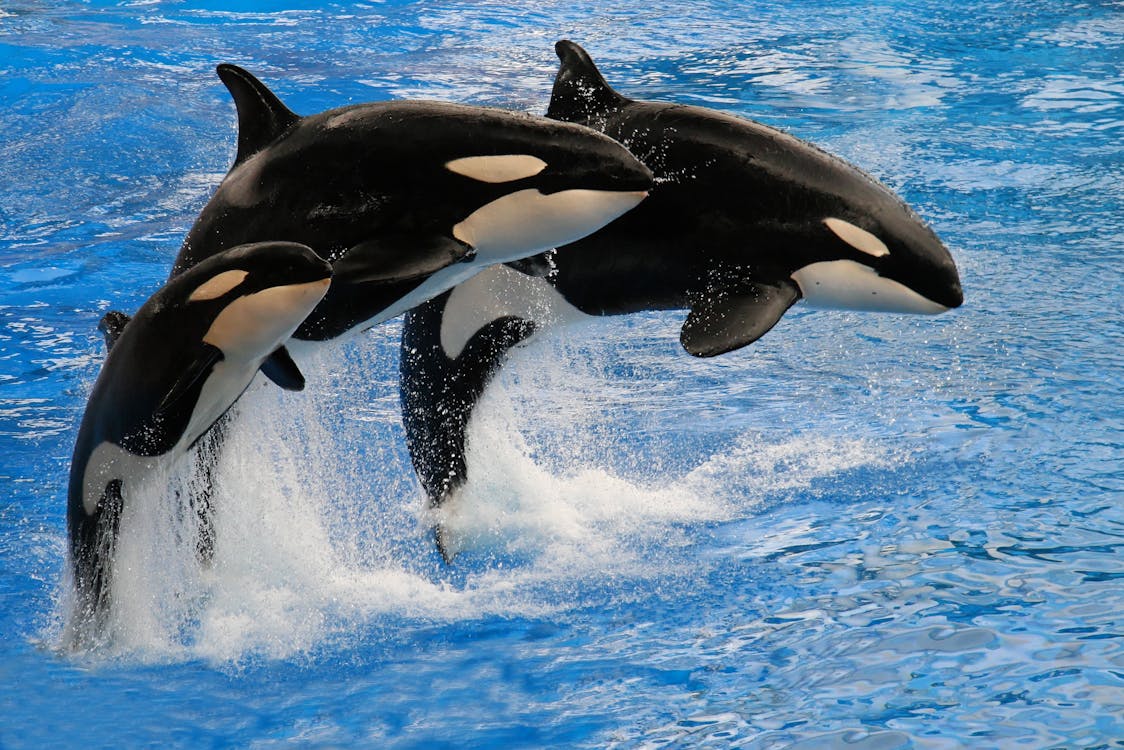The orca (Orcinus orca), or killer whale, is a toothed whale and the largest member of the oceanic dolphin family. It is the only extant species in the genus Orcinus and is recognizable by its black-and-white patterned body. A cosmopolitan species, they are found in diverse marine environments, from Arctic to Antarctic regions to tropical seas.


Day-to-day orca behaviour generally consists of foraging, travelling, resting and socializing. Orcas frequently engage in surface behaviour such as breaching (jumping completely out of the water) and tail-slapping. These activities may have a variety of purposes, such as courtship, communication, dislodging parasites, or play. Spyhopping is a behaviour in which a whale holds its head above water to view its surroundings.[108] Resident orcas swim alongside porpoises and other dolphins.[109]
All members of a resident pod use similar calls, known collectively as a dialect. Dialects are composed of specific numbers and types of discrete, repetitive calls. They are complex and stable over time.[123] Call patterns and structure are distinctive within matrilines.[124] Newborns produce calls similar to their mothers, but have a more limited repertoire.[117] Individuals likely learn their dialect through contact with pod members.[125] Family-specific calls have been observed more frequently in the days following a calf’s birth, which may help the calf learn them.